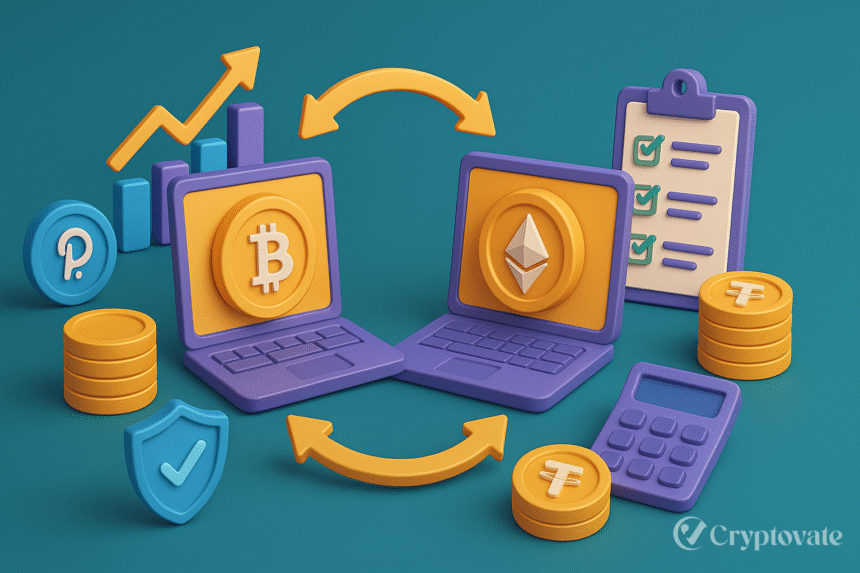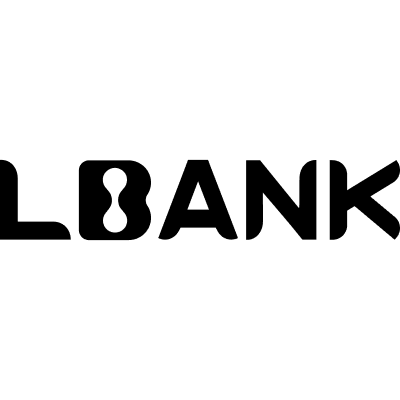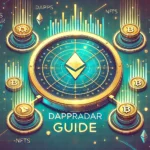– Ad –
| Getting your Trinity Audio player ready... |
Crypto peer-to-peer (P2P) lending is revolutionizing how investors earn passive income and borrowers access funds without traditional banks. By leveraging blockchain technology, these platforms enable direct, secure, and transparent transactions. In 2025, the crypto lending market is projected to grow significantly, driven by rising demand for decentralized finance (DeFi) solutions. This article highlights the best crypto P2P lending platforms to watch in 2025, comparing their features, benefits, and risks to help you make informed decisions.
Why Choose Crypto P2P Lending Platforms?
Crypto P2P lending platforms directly link lenders with borrowers, bypassing middlemen. Lenders deposit cryptocurrencies like Bitcoin (BTC), Ethereum (ETH), or stablecoins (e.g., USDC) to earn interest, while borrowers use their crypto as collateral to secure loans. Key advantages include:
- High Returns: Lenders can earn 5–15% annual percentage yield (APY), often surpassing traditional savings accounts.
- Accessibility: No credit checks are required, making borrowing easier for users worldwide.
- Transparency: Blockchain ensures immutable transaction records, fostering trust.
- Flexibility: Platforms provide flexible loan terms, including short-term and fixed-rate options.
However, risks like price volatility, smart contract vulnerabilities, and platform security must be considered. For a deeper understanding of how P2P lending works, check out our guide on Crypto Peer-to-Peer Lending 2024.
Top Crypto P2P Lending Platforms for 2025
Here are the leading platforms to watch, selected based on security, user experience, supported assets, and innovation.
1. Aave
Aave is a leading DeFi platform on Ethereum, compatible with blockchains like Polygon and Avalanche. It offers a non-custodial P2P lending experience where users interact with liquidity pools via smart contracts. Aave’s standout feature is flash loans, allowing uncollateralized borrowing for advanced users (requires coding expertise).
- Supported Assets: BTC, ETH, USDC, DAI, and 30+ others.
- Interest Rates: Variable APYs (3–10% for lenders, 5–12% for borrowers).
- Security: Regular audits and decentralized governance.
- Pros: Wide asset support, flash loans, multi-chain compatibility.
- Cons: Complex for beginners, high gas fees on Ethereum.
Aave is ideal for experienced DeFi users seeking flexibility and high yields.
2. Compound
Compound is another Ethereum-based DeFi platform known for its user-friendly interface and algorithmic interest rates. Lenders supply assets to pools, earning interest based on supply and demand, while borrowers over-collateralize loans (typically 50–75% loan-to-value ratio).
- Supported Assets: ETH, DAI, USDC, WBTC, and more.
- Interest Rates: Dynamic APYs (2–8% for lenders, 4–10% for borrowers).
- Security: Audited smart contracts, proven track record.
- Pros: Easy to use, transparent rates, no KYC required.
- Cons: Limited asset variety, sensitive to market fluctuations.
Compound suits beginners and those prioritizing simplicity in DeFi lending.
3. Nexo
Nexo is a centralized (CeFi) platform offering P2P lending with a polished, beginner-friendly experience. It combines crypto-backed loans with traditional banking features, like instant credit lines and a debit card for spending borrowed funds.
- Supported Assets: Over 100 cryptocurrencies, including BTC, ETH, and SOL.
- Interest Rates: Up to 15% APY for lenders, 2.9–18.9% for borrowers (based on NEXO token holdings).
- Security: Third-party custodians (e.g., BitGo), EU regulatory compliance.
- Pros: High yields, intuitive interface, daily interest payouts.
- Cons: Custodial risks, not available in the U.S.
Nexo is perfect for users seeking convenience and regulatory oversight.
4. Bitfinex Borrow
Bitfinex Borrow is a P2P lending platform where users set custom loan terms, using BTC or ETH as collateral. It emphasizes transparency and flexibility, allowing borrowers to use funds for trading or other purposes.
- Supported Assets: BTC, ETH (more planned for 2025).
- Interest Rates: Variable, set by users (typically 5–12% APR).
- Security: Cold storage, multi-factor authentication.
- Pros: Customizable terms, fast loan processing, no usage restrictions.
- Cons: Limited asset support, requires Bitfinex account verification.
Bitfinex Borrow appeals to traders and advanced users valuing control.
5. Liquity
Liquity is a decentralized protocol offering interest-free loans against ETH collateral, charging a one-time 0.5% fee. Its governance-free model and 110% minimum collateral ratio ensure stability, making it a unique player in DeFi lending.
- Supported Assets: ETH (staked ETH support added in 2025).
- Interest Rates: 0% for borrowers (0.5% fee), 2–5% APY for lenders.
- Security: Audited contracts, algorithmic liquidations.
- Pros: No interest for borrowers, low fees, high stability.
- Cons: ETH-only collateral, technical interface.
Liquity is best for ETH holders seeking cost-effective borrowing.
Key Factors to Consider
When choosing a crypto P2P lending platform, evaluate:
- Centralized vs. Decentralized: CeFi platforms (e.g., Nexo) offer ease of use but involve custodial risks. DeFi platforms (e.g., Aave) provide control but require technical know-how.
- Security: Look for audits, cold storage, or insurance coverage.
- Rates and Fees: Compare APYs, borrowing costs, and hidden fees.
- Supported Assets: Ensure the platform supports your preferred cryptocurrencies.
- Regulatory Compliance: CeFi platforms with licenses (e.g., Nexo) may offer added trust.
Risks to Watch Out For
- Volatility: Crypto price drops can trigger liquidations if collateral value falls below the loan-to-value ratio.
- Smart Contract Bugs: DeFi platforms rely on code, which can have vulnerabilities.
- Platform Insolvency: Centralized platforms risk mismanagement, as seen in past collapses like Celsius.
- Regulatory Changes: Evolving laws may impact platform operations.
Always diversify investments and only lend or borrow what you can afford to lose.
Conclusion
Crypto P2P lending platforms in 2025 offer exciting opportunities for earning passive income or accessing liquidity. Aave and Compound lead in DeFi with decentralized flexibility, while Nexo and Bitfinex Borrow cater to users seeking convenience. Liquity stands out for low-cost borrowing. By weighing features, risks, and your goals, you can choose the platform that suits you best. Stay informed, diversify, and lend or borrow responsibly to navigate this dynamic market successfully.
FAQs
What is crypto P2P lending?
Crypto P2P lending allows users to lend cryptocurrencies to earn interest or borrow funds using crypto as collateral, facilitated by blockchain platforms.
Are crypto P2P lending platforms safe?
Safety varies by platform. DeFi platforms like Aave are non-custodial but carry smart contract risks. CeFi platforms like Nexo offer regulatory compliance but involve custodial risks.
Which platform offers the highest returns in 2025?
Nexo offers up to 15% APY for lenders, while Aave and Compound provide 3–10% APYs, depending on market conditions.
Do I need technical skills for DeFi lending?
Yes, platforms like Aave and Liquity require familiarity with wallets and blockchain transactions. CeFi platforms like Nexo are more beginner-friendly.
Can I lose my collateral in crypto lending?
Yes, if the collateral’s value drops significantly, it may be liquidated to cover the loan, especially in volatile markets.

















